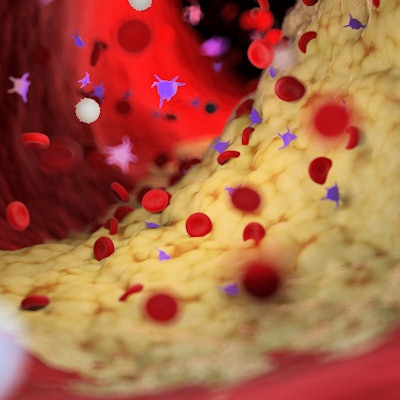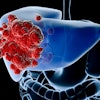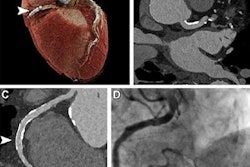
Photon-counting CT (PCCT) reduces radiation dose for coronary CT angiography (CCTA) exams compared with dual-source CT by more than a third, according to research presented at the recent ECR in Vienna.
 Dr. Martine Rémy-Jardin, PhD.
Dr. Martine Rémy-Jardin, PhD.The technology also cuts exam time by 75%, reported a team led by Dr. Martine Rémy-Jardin, PhD, of the University Centre of Lille, France.
"PCCT acquisitions provided similar morphologic image quality and superior perfusion imaging at lower radiation dose," Rémy-Jardin reported.
The results came from two studies the team conducted. The first included 71 patients who had PCCT CCTA exams; these data were compared with data from a matched cohort of patients who had dual-source CCTA imaging. The dual-source cohort was considered to be group 1 and the PCCT cohort was group 2.
Group 2 exams showed a significantly lower dose length product (DLP) compared with group 1 exams -- at 172.6 mGy*cm versus 339.4 mGy*cm (p < 0.001) -- and had a 75% shorter acquisition time (0.93 seconds vs. 3.98 seconds, p < 0.0001). There were no significant differences in attenuation values in the central pulmonary arteries or the aorta on images taken at 70 keV, the team reported. The researchers did find that Hounsfield unit (HU) values were higher on the PCCT images compared with the dual-source CT images, at 9.55 HU and 6.88 HU, respectively.
In a related presentation given during the same session, Rémy-Jardin shared findings from a second study that further confirmed how PCCT for CCTA reduces radiation doses compared with conventional CT. For this research, the investigators evaluated three protocols:
- A standard CCTA protocol at the arterial phase (group 1, referred for suspicion of pulmonary embolism over a 9-month period and scanned with either dual-source CT [284 patients] or PCCT [345 patients])
- A venous-phase CCTA protocol (group 2, scanned with dual-source CT for thoracic cancer follow-up, 76 patients)
- A noncontrast CT protocol (group 3, scanned with PCCT for interstitial lung disease, 112 patients)
The team found that PCCT reduced dose length product (DLP) across all patient groups, but particularly in group 1.
| Performance comparison of PCCT to conventional CT for coronary CT angiography studies | ||||
| Group | Conventional CT mean DLP | PCCT mean DLP | Percent dose reduction | |
| Group 1 | 295.3 mGy*cm | 186.1 mGy*cm | 37% | |
| Group 2 | 442 mGy*cm | 331.5 mGy*cm | 25% | |
| Group 3 | 88.5 mGy*cm | 129.8 mGy*cm | 32% | |
"This study demonstrates substantial dose reduction with PCCT compared to [conventional] CT," Rémy-Jardin and colleagues concluded.




















